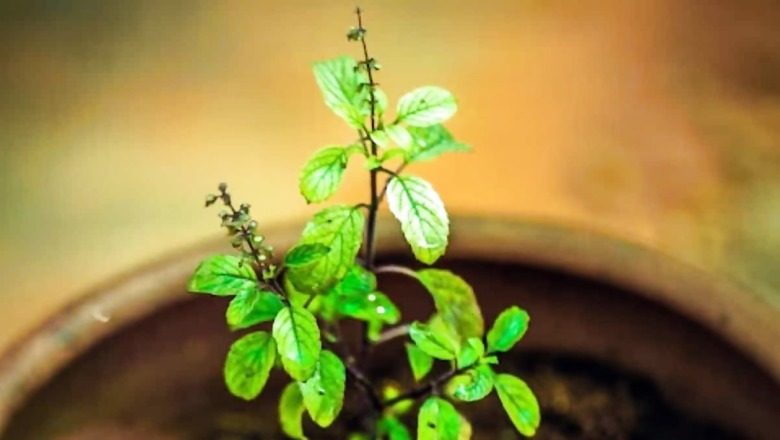
views
People in our country are becoming increasingly interested in gardening. They grow several kinds of plants in their homes. Plants linked with Hindu traditions, such as the Tulsi or Basil plant, have unique significance. Tulsi is not only worshipped, but also used as a medicinal plant. That is why this plant may be found in practically every house. Taking care of a plant is just as important as planting one. They do not necessarily dry up simply in the summer; such problems can also develop during the monsoon season. Water, direct sunlight, and poor soil quality can all harm your plant. In such a case, you should surely follow these guidelines to keep your Tulsi plant green.
Enhance the soil’s quality
If the plant begins to dry up during the wet season, you should check the soil and water. You can occasionally mix manure into the soil to help the Tulsi plant’s soil quality. Neem cake or vermicompost are other options for this.
Make tiny holes in the pot
During the rainy season, the Tulsi plant requires less watering. Some people, however, water it daily, causing the roots to rot and harming the plant. As a result, water only when the soil is dry, and make sure there is no water stagnation in the pot. You can do this by making holes in the bottom of the pot so that water drips out gradually.
Spray onion water
Spraying onion water over Tulsi is also good. Apart from that, crushing the chalk used by children to write on a slate and mixing it in the soil of Tulsi promotes growth. Due to a calcium deficiency, even the drying plant begins to produce new leaves.
Requirement for repotting:
Tulsi plant roots spread quickly, and the growth stops when a cluster of roots appears at the bottom of the pot. In such cases, the monsoon season is ideal for repotting; disturbing the roots of a Tulsi plant during the hot summer or winter months increases the plant’s chances of dying. As a result, you can prune it in the rain and transfer it to a different container or pot.

















Comments
0 comment